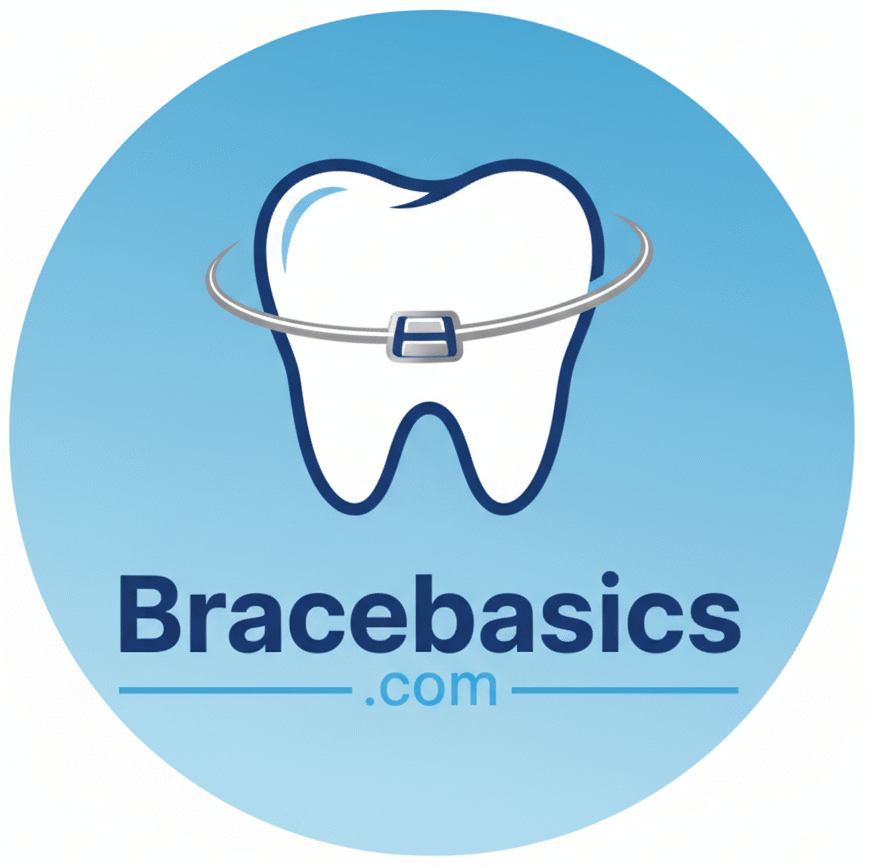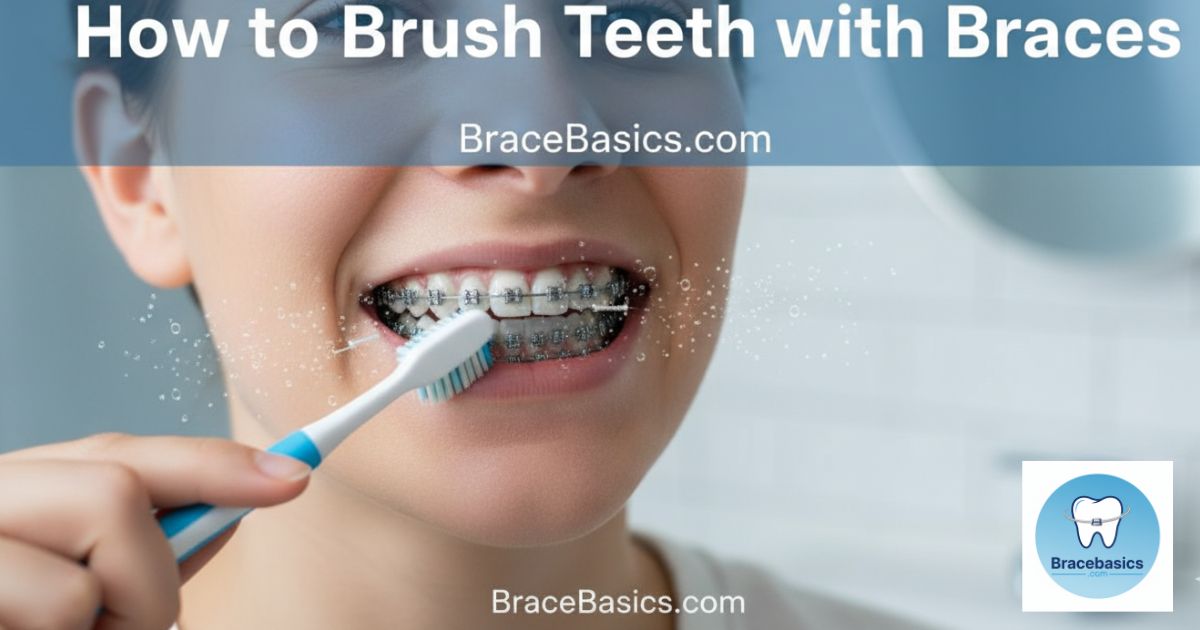How to Brush Teeth with Braces is one of the most important skills you need during orthodontic treatment. Braces make cleaning tricky because food can easily hide around brackets and wires. That’s why learning the best way to brush with braces matters for your smile. With the right steps, you can reduce plaque, avoid gum disease, and keep your teeth bright. Using a soft-bristled toothbrush and following a proper brushing technique ensures your braces stay clean and effective. This guide will show you how to clean teeth with braces so you protect your gums, teeth, and braces every day.
Why Proper Brushing Matters with Braces
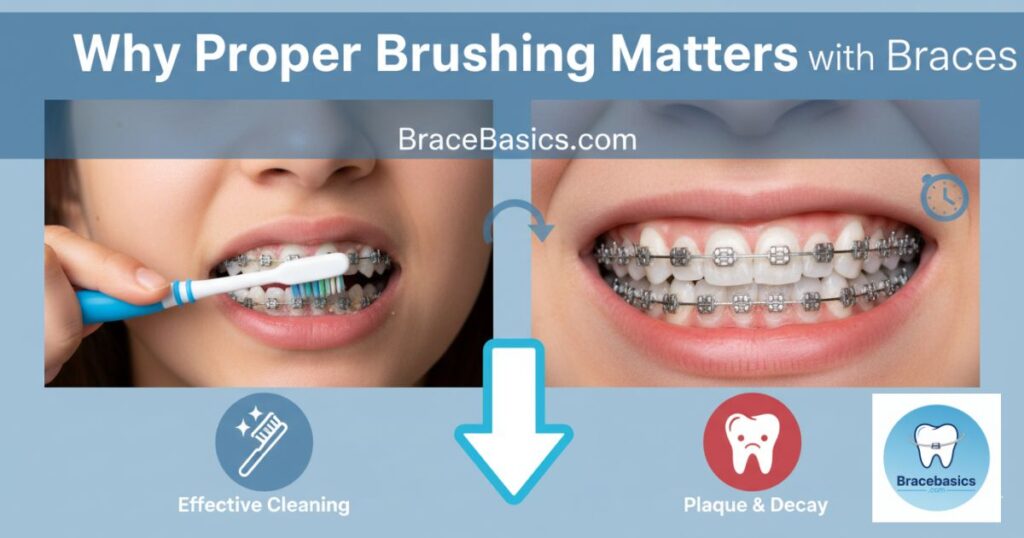
Braces create small spaces where food easily gets trapped. These hidden spots make plaque buildup prevention more difficult and increase the risk of cavities. When food particles remain on brackets and wires cleaning becomes harder, and stains can form around the edges. Without the proper brushing technique, teeth may develop permanent white spots after treatment.
Taking care of braces is not only about a straight smile but also about health. Poor brushing leads to gum disease with braces, bleeding gums, and bad breath. Keeping braces clean helps you heal faster and enjoy better results from orthodontic treatment care. The cleaner the teeth remain, the sooner you will enjoy a confident smile after braces.
Preparing Before You Brush
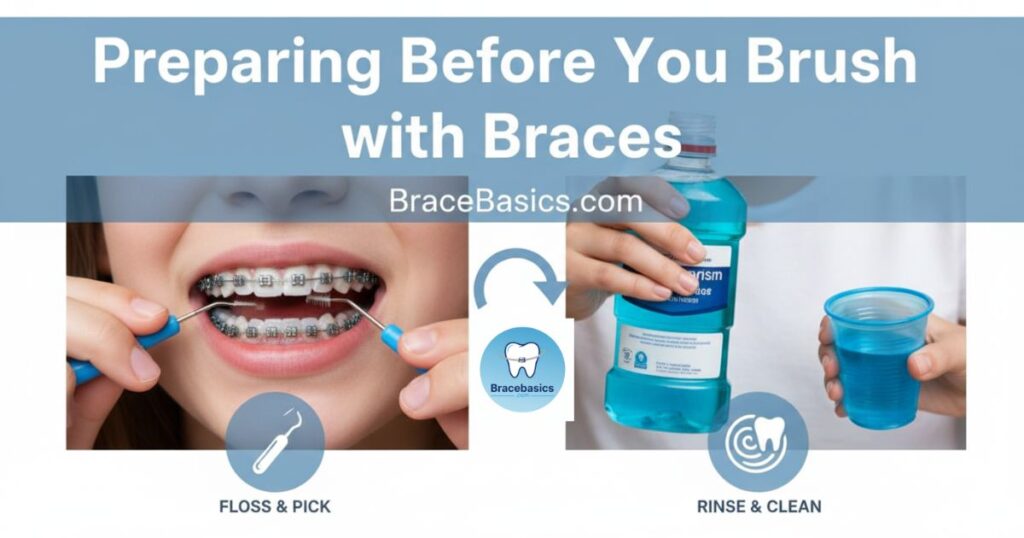
Before learning how to brush teeth with braces, you need the right tools. A soft-bristled toothbrush, fluoride toothpaste for braces, a floss threader / orthodontic floss, interdental brushes, and a water flosser / oral irrigator are the most effective. Dentists also recommend disclosing tablets that reveal hidden plaque, helping you master the orthodontic hygiene routine.
Another important step is preparation. A quick rinse with water loosens food stuck in wires, making brushing with braces easier. Avoid sticky foods and braces like caramel or gum before brushing because they cling to wires. Also skip crunchy foods damage braces, such as popcorn or nuts, which can break brackets and delay treatment.
Step-by-Step Guide How to Brush Teeth with Braces
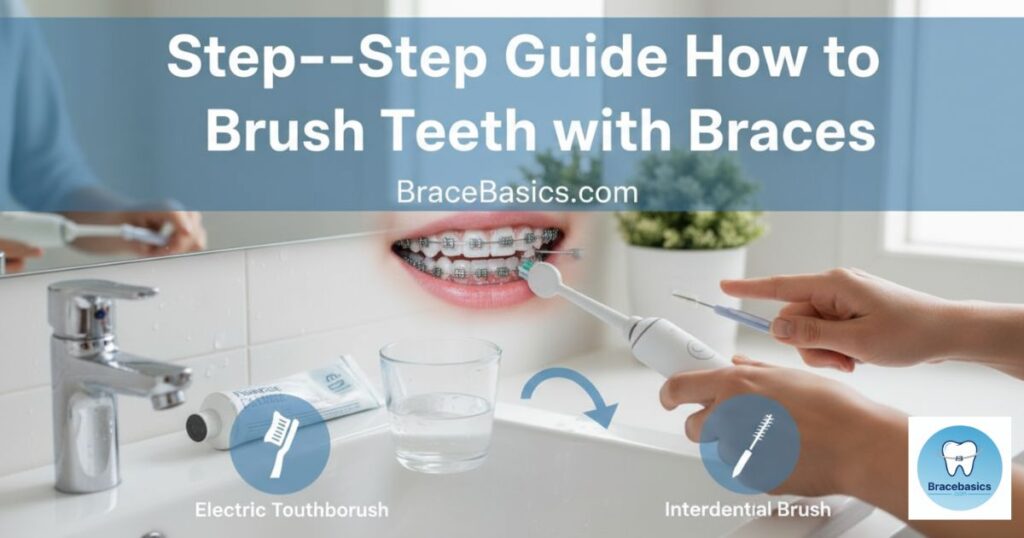
- Gather your tools. Use a soft-bristled toothbrush and fluoride toothpaste for braces. Grab a floss threader / orthodontic floss and interdental brushes. Keep a water flosser / oral irrigator handy for later.
- Pre-rinse your mouth. Rinse with water to loosen big food pieces. This small step makes brushing with braces easier and faster.
- Place the brush at the right angle. Tilt the brush slightly toward the gum line. Aim the bristles above the wire and below the bracket for full brackets and wires cleaning.
- Brush the outer surfaces gently. Use short, circular strokes along each tooth. Spend time where the bracket meets the tooth to reduce plaque buildup prevention issues.
- Brush the inner and chewing surfaces. Turn the brush to reach the inside of each tooth. Clean the chewing surfaces with back-and-forth strokes until smooth.
- Brush above and below the braces. Hold the brush so you clean the gum line and the area under the wire. This prevents gum disease with braces and white spots.
- Use an interdental brush for tight spaces. Slide the small brush between the wire and teeth. Clean under and around each bracket to remove stuck food.
- Floss using a floss threader. Thread floss under the archwire with the threader. Gently move floss up and down between two teeth. Repeat for every gap to keep gums healthy.
- Use a water flosser if needed. Aim the tip along the gum line and between teeth. The water flosser / oral irrigator removes debris where floss can miss.
- Rinse and inspect. Rinse with water or mouthwash after brushing. Use a mirror and disclosing tablets if you want to see leftover plaque.
- Finish with tongue and gum care. Lightly brush your tongue and massage gums. This adds fresh breath and aids post-brushing care.
- Store and replace tools. Rinse your brush and let it air dry. Replace the head every three months or after sickness to keep cleaning strong.
- Carry a travel kit for on-the-go care. Pack a mini brush, floss, and interdental tool for school or work. Brushing after meals protects your orthodontic treatment care and speeds results.
- Check with your orthodontist. Ask how often you should come in and which tools they prefer. Regular dental checkups with braces catch small problems early.
Step-by-Step Guide How to Brush Teeth with Braces with Images
Preparing to Brush with Braces
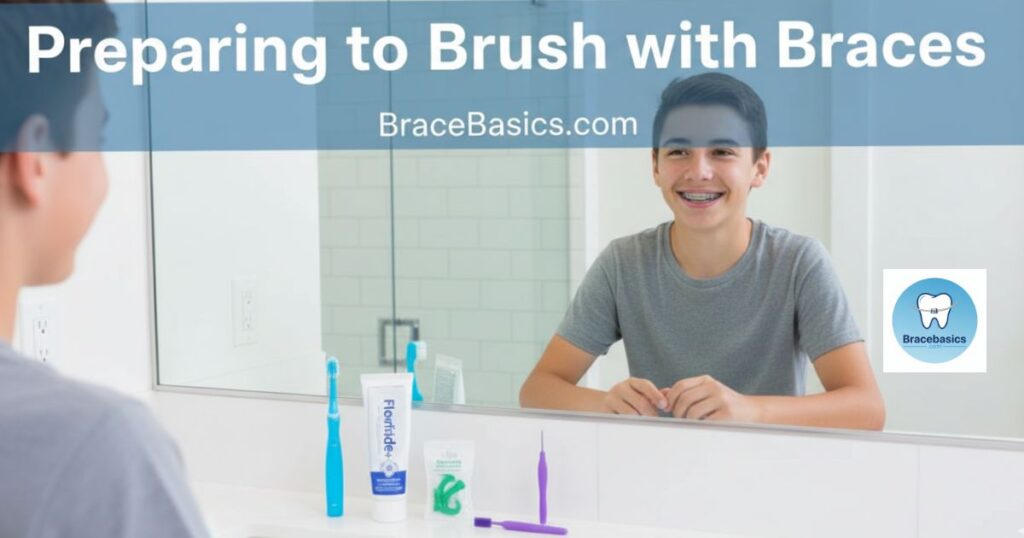
Before brushing, gather everything you need. A soft-bristled toothbrush, fluoride toothpaste for braces, a floss threader, and interdental brushes make cleaning easier. Having the right tools ensures a smooth orthodontic hygiene routine and saves time every day.
Angling the Toothbrush Correctly
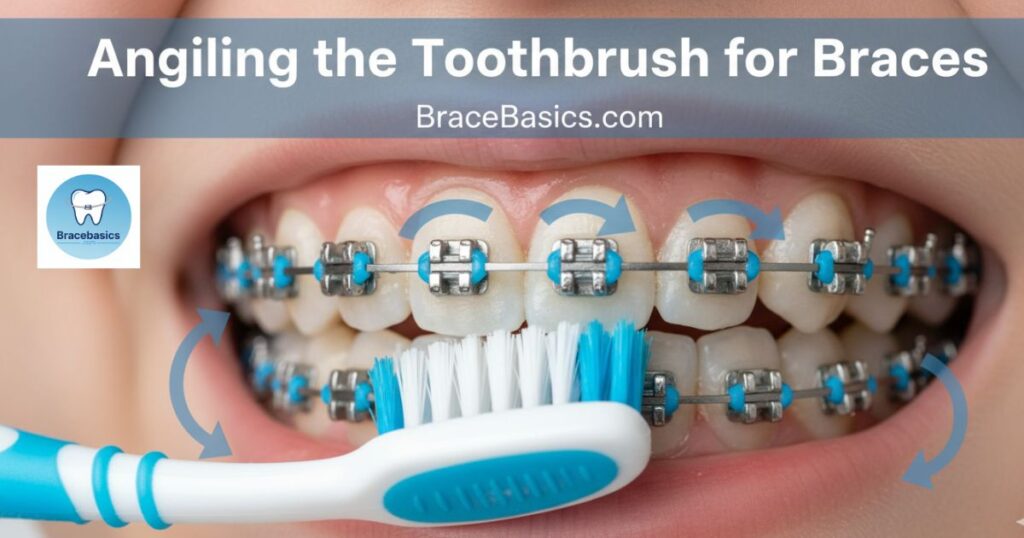
The best way to brush with braces is to angle your toothbrush at 45 degrees. Gently clean above the wire and below the brackets. This proper brushing technique helps prevent plaque buildup with braces and keeps your teeth safe from stains.
Cleaning Brackets and Tooth Surfaces
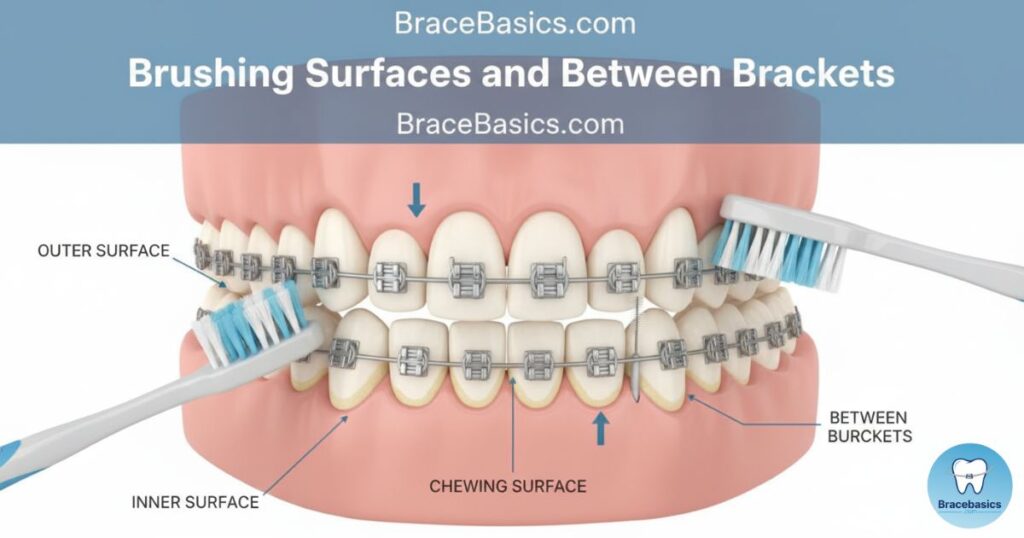
Focus on all areas of your teeth. Brush the outer, inner, and chewing surfaces carefully, then use interdental brushes to clean around brackets. Regular brackets and wires cleaning reduces food buildup and protects your gums from infection.
Flossing and Water Flosser Use
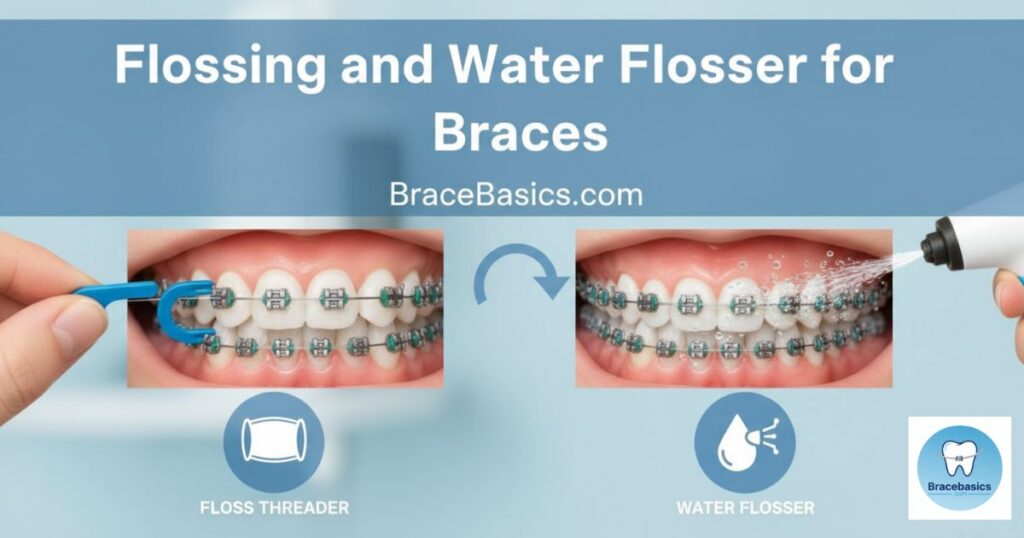
Flossing is just as important as brushing. A floss threader / orthodontic floss helps you reach under wires, while a water flosser / oral irrigator removes leftover food between teeth. Both tools are essential for keeping braces fresh and effective.
Rinsing, Checking, and Gum Care
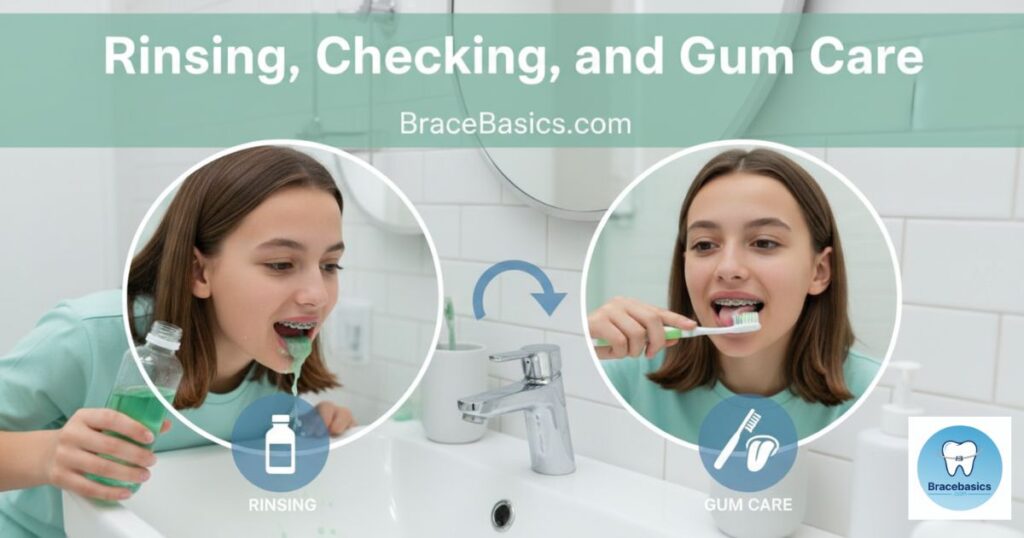
After brushing, rinse with antibacterial mouthwash to fight germs and freshen breath. Don’t forget to brush your tongue and check with a mirror for missed spots. This simple post-brushing care prevents gum disease with braces and supports a confident smile.
Best Tools for Brushing with Braces
Many people ask, can I use an electric toothbrush with braces? Yes, but it must have soft bristles and gentle speed. Some prefer manual brushes because they control the pressure. However, an electric brush often removes more plaque, helping with what to do after brushing with braces.
Other tools play a big role in how to clean teeth with braces. Interdental brushes slip between brackets, cleaning spaces a normal brush misses. A water flosser / oral irrigator helps wash away debris quickly. Together with fluoride toothpaste for braces, they form the backbone of every strong orthodontic hygiene routine.
Common Brushing Mistakes to Avoid
Brushing too hard scratches brackets and harms gums. Many patients skip the gum line, which leads to what happens if I don’t brush with braces—red, swollen gums. Another mistake is brushing too quickly. How long should you brush with braces is always at least two minutes.
A worn brush head cannot clean properly, so replace it every three months. Forgetting to rinse also leaves hidden food behind. To answer, should I rinse after brushing with braces? Yes, always use clean water or mouthwash as part of post-brushing care.
How Many Times Should You Brush with Braces?
Dentists often stress, why is oral hygiene important with braces? Because food sticks more than usual. That’s why brushing after every meal is the best way to brush with braces. If not possible, rinse well and brush at least twice daily.
Carrying a small kit makes this easy. Pack a soft-bristled toothbrush, mini toothpaste, and floss. With this, you can handle emergencies at work or school. Having the right kit keeps your orthodontic treatment care on track and ensures faster results.
Flossing and Rinsing Tips for Braces Wearers
Many wonder, how to floss with braces step by step? Thread the floss under the wire with a floss threader / orthodontic floss and clean between teeth gently. If that feels hard, try a water flosser / oral irrigator. Both methods prevent gum disease with braces by removing food between tight spaces.
Rinsing is just as vital. Mouthwash fights germs and strengthens enamel. The simple question, should I rinse after brushing with braces, always has one answer—yes. A rinse clears leftovers and freshens the mouth. Finally, use a mirror to check results and ensure tips for cleaning braces effectively are working.
Additional Oral Care Tips with Braces
There are many foods to avoid with braces. Sticky foods and braces like taffy cling tightly, while crunchy foods damage braces like chips and nuts break wires. A healthy diet with soft foods like Fruits and dairy makes cleaning easier.
Don’t neglect gums. Massage them gently with a soft-bristled toothbrush and rinse with salt water if sore. Regular dental checkups with braces catch small problems early. During each visit, orthodontists provide orthodontic treatment care advice to keep progress moving toward a confident smile after braces.
Caring for Kids with Braces
Parents must guide children on how to brush teeth with braces. Supervised routines help avoid what happens if I don’t brush with braces issues. Using timers or brushing apps can make it fun. Kids often need encouragement to complete their orthodontic hygiene routine.
Consistency is everything. Children may not understand why are dental checkups important with braces, so parents should explain in simple words. By making brushing fun and regular, kids gain better results and learn the proper brushing technique for life.
Conclusion
Learning how to brush teeth with braces correctly ensures teeth stay healthy and strong during treatment. Good brushing prevents stains, cavities, and gum issues, helping the wires do their job. Following these steps also explains what tools are essential for cleaning braces and why dentists stress routine care.
Consistency pays off. By practicing tips for cleaning braces effectively and avoiding bad habits, you’ll enjoy faster results and a confident smile after braces. Remember, a clean smile today builds a bright future tomorrow.
FAQs
How to brush your teeth if you have braces?
If you wear braces, you should brush slowly and carefully. Use a soft-bristled toothbrush or an electric toothbrush with fluoride toothpaste for braces. Hold the brush at an angle above and below the brackets and wires cleaning area. Make sure to clean the chewing surfaces, the inside of your teeth, and your tongue. This proper brushing technique helps with plaque buildup prevention and keeps your gums healthy.
What is the 3 3 3 brushing rule?
The 3 3 3 rule means you should brush 3 times a day, for 3 minutes, and wait 3 hours after eating sweets before brushing. This rule is useful for people in orthodontic treatment care because it gives enough time to remove food particles, stop plaque buildup with braces, and protect against gum disease with braces.
What is the 2 2 2 rule for brushing teeth?
The 2 2 2 rule is simple: brush 2 times a day, for 2 minutes, and visit your dentist 2 times a year. It’s a basic routine for everyone, but for people with braces, it’s often better to brush more often. Following this orthodontic hygiene routine keeps your smile fresh and reduces the risk of sticky foods and braces problems.
Can I use toothpaste with braces?
Yes, you can and should use toothpaste with braces. Dentists recommend fluoride toothpaste for braces because it strengthens enamel and prevents cavities around the brackets and wires cleaning area. Avoid whitening toothpaste, as it can leave uneven color once the braces are removed. The best way to brush with braces is always with a fluoride-based paste and gentle strokes for complete post-brushing care.
Can You Eat Pizza With Braces?
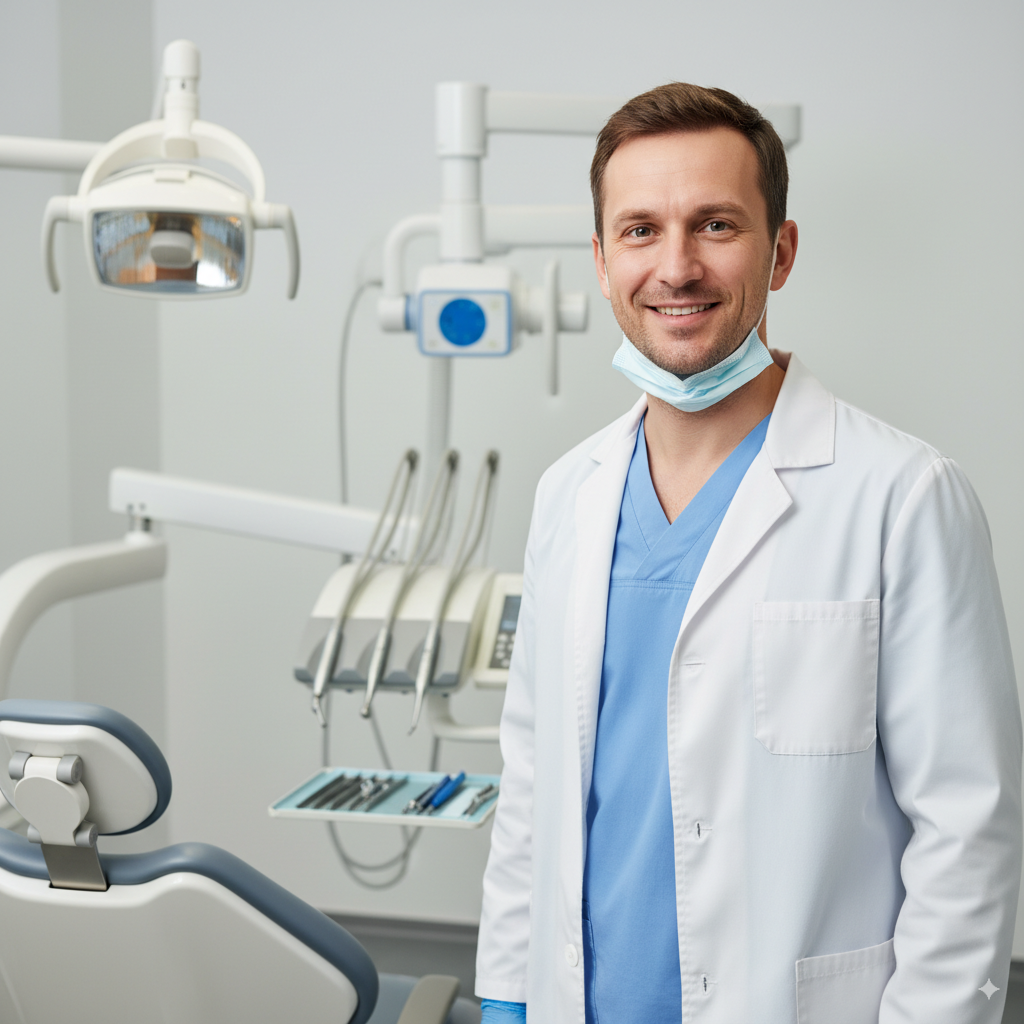
Hi, I’m Dr. Martin, the founder of BracsBasics.com. With years of experience in orthodontics, I’ve made it my mission to simplify braces care for patients of all ages. Here, you’ll find easy-to-understand advice, practical tips, and reliable resources to make your braces journey smoother, healthier, and stress-free. My goal is to help you smile with confidence every step of the way.
